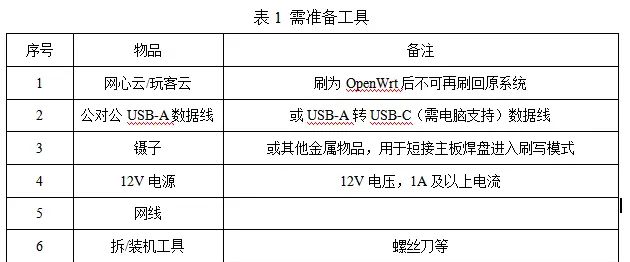介绍
这是开始使用正则表达式(Regex)的快速备忘单。
- Python 中的 Regex (Quick Reference)
- JavaScript 中的 Regex (Quick Reference)
- PHP 中的 Regex (Quick Reference)
- Java 中的 Regex (Quick Reference)
- MySQL 中的 Regex (Quick Reference)
- Vim 中的 Regex (Quick Reference)
- 在线 Regex 测试器 (regex101.com)
- 轻松学习 Regex (github.com)
- 正则表达式实例搜集 (jaywcjlove.github.io)
字符类
|
[abc] |
单个字符:a、b 或 c |
|
[^abc] |
一个字符,除了:a、b 或 c |
|
[a-z] |
范围内的字符:a-z |
|
[^a-z] |
不在范围内的字符:a-z |
|
[0-9] |
范围内的数字:0-9 |
|
[a-zA-Z] |
范围内的字符: |
|
[a-zA-Z0-9] |
范围内的字符: |
量词
|
a? |
零个或一个a |
|
a* |
零个或多个 a |
|
a+ |
一个或多个a |
|
[0-9]+ |
0-9中的一个或多个 |
|
a{3} |
正好 3 个 a |
|
a{3,} |
3个或更多的a |
|
a{3,6} |
a 的 3 到 6 之间 |
|
a* |
贪心量词 |
|
a*? |
惰性量词 |
|
a*+ |
占有量词 |
常用元字符
- ^
- {
- +
- <
- [
- *
- )
- >
- .
- (
- |
- $
- ?
使用 转义这些特殊字符
元序列
|
. |
任何单个字符 |
|
s |
任何空白字符 |
|
S |
任何非空白字符 |
|
d |
任何数字,与 [0-9] 一样 |
|
D |
任何非数字,与 [^0-9] 一样 |
|
w |
任何单词字符 |
|
W |
任何非单词字符 |
|
X |
任何 Unicode 序列,包括换行符 |
|
C |
匹配一个数据单元 |
|
R |
Unicode 换行符 |
|
v |
垂直空白字符 |
|
V |
v 的否定 – 除了换行符和垂直制表符之外的任何内容 |
|
h |
水平空白字符 |
|
H |
h 的否定 |
|
K |
重置匹配 |
|
匹配第 n 个子模式 |
|
|
pX |
Unicode 属性 X |
|
p{…} |
Unicode 属性或脚本类别 |
|
PX |
pX 的否定 |
|
P{…} |
p 的否定 |
|
Q…E |
引用;视为文字 |
|
k<name> |
匹配子模式name |
|
k'name' |
匹配子模式name |
|
k{name} |
匹配子模式name |
|
gn |
匹配第 n 个子模式 |
|
g{n} |
匹配第 n 个子模式 |
|
g<n> |
递归第 n 个捕获组 |
|
g'n' |
递归第 n 个捕获组。 |
|
g{-n} |
匹配第 n 个相对前一个子模式 |
|
g<+n> |
递归第 n 个相对即将到来的子模式 |
|
g'+n' |
匹配第 n 个相对即将到来的子模式 |
|
g'letter' |
递归命名捕获组 字母 |
|
g{letter} |
匹配先前命名的捕获组 字母 |
|
g<letter> |
递归命名捕获组 字母 |
|
xYY |
十六进制字符 YY |
|
x{YYYY} |
十六进制字符 YYYY |
|
ddd |
八进制字符ddd |
|
cY |
控制字符 Y |
|
[] |
退格字符 |
|
使任何字符文字 |
锚点
|
G |
比赛开始 |
|
^ |
字符串的开始 |
|
$ |
字符串结束 |
|
A |
字符串的开始 |
|
字符串结束 |
|
|
z |
字符串的绝对结尾 |
|
一个词的边界 |
|
|
B |
非单词边界 |
替代
|
完整的比赛内容 |
|
|
1 |
捕获组 1 中的内容 |
|
$1 |
捕获组 1 中的内容 |
|
${foo} |
捕获组 foo 中的内容 |
|
x20 |
十六进制替换值 |
|
x{06fa} |
十六进制替换值 |
|
标签 |
|
|
回车 |
|
|
新队 |
|
|
f |
换页 |
|
U |
大写转换 |
|
L |
小写转换 |
|
E |
终止任何转换 |
组构造
|
(…) |
捕获所有封闭的东西 |
|
(a|b) |
匹配 a 或 b |
|
(?:…) |
匹配随附的所有内容 |
|
(?>…) |
原子组(非捕获) |
|
(?|…) |
重复的子模式组号 |
|
(?#…) |
注解 |
|
(?'name'…) |
命名捕获组 |
|
(?<name>…) |
命名捕获组 |
|
(?P<name>…) |
命名捕获组 |
|
(?imsxXU) |
内联修饰符 |
|
(?(DEFINE)…) |
在使用它们之前预定义模式 |
断言
|
(?(1)yes|no) |
条件语句 |
|
(?(R)yes|no) |
条件语句 |
|
(?(R#)yes|no) |
递归条件语句 |
|
(?(R&name)yes|no) |
条件语句 |
|
(?(?=…)yes|no) |
有条件的前瞻 |
|
(?(?<=…)yes|no) |
有条件的往后看 |
递归
|
(?R) |
递归整个模式 |
|
(?1) |
递归第一个子模式 |
|
(?+1) |
递归第一个相对子模式 |
|
(?&name) |
递归子模式name |
|
(?P=name) |
匹配子模式name |
|
(?P>name) |
递归子模式name |
标志/修饰符
|
g |
全部 |
|
m |
多行 |
|
i |
不区分大小写 |
|
x |
忽略空格 |
|
s |
单线 |
|
u |
统一码 |
|
X |
扩展 |
|
U |
不贪心 |
|
A |
锚 |
|
J |
重复的组名 |
|
d |
结果包含捕获组子字符串开始和结束的索引 |
零宽度断言
|
(?=…) |
正先行断言 |
|
(?!…) |
负先行断言 |
|
(?<=…) |
正后发断言 |
|
(?<!…) |
负后发断言 |
|
?= |
正先行断言-存在 |
|
?! |
负先行断言-排除 |
|
?<= |
正后发断言-存在 |
|
?<! |
负后发断言-排除 |
零宽度断言 允许您在主模式之前(向后看)或之后(lookahead)匹配一个组,而不会将其包含在结果中。
POSIX 字符类
|
字符类 |
如同 |
意义 |
|
[[:alnum:]] |
[0-9A-Za-z] |
字母和数字 |
|
[[:alpha:]] |
[A-Za-z] |
字母 |
|
[[:ascii:]] |
[x00-x7F] |
ASCII 码 0-127 |
|
[[:blank:]] |
[ ] |
仅空格或制表符 |
|
[[:cntrl:]] |
[x00-x1Fx7F] |
控制字符 |
|
[[:digit:]] |
[0-9] |
十进制数字 |
|
[[:graph:]] |
[[:alnum:][:punct:]] |
可见字符(不是空格) |
|
[[:lower:]] |
[a-z] |
小写字母 |
|
[[:print:]] |
[ -~] == [ [:graph:]] |
可见字符 |
|
[[:punct:]] |
[!”#$%&’()*+,-./:;<=>?@[]^_`{|}~] |
可见标点符号 |
|
[[:space:]] |
[ |
空白 |
|
[[:upper:]] |
[A-Z] |
大写字母 |
|
[[:word:]] |
[0-9A-Za-z_] |
单词字符 |
|
[[:xdigit:]] |
[0-9A-Fa-f] |
十六进制数字 |
|
[[:<:]] |
[(?=w)] |
词的开头 |
|
[[:>:]] |
[(?<=w)] |
词尾 |
控制动词
|
(*ACCEPT) |
控制动词 |
|
(*FAIL) |
控制动词 |
|
(*MARK:NAME) |
控制动词 |
|
(*COMMIT) |
控制动词 |
|
(*PRUNE) |
控制动词 |
|
(*SKIP) |
控制动词 |
|
(*THEN) |
控制动词 |
|
(*UTF) |
图案修饰符 |
|
(*UTF8) |
图案修饰符 |
|
(*UTF16) |
图案修饰符 |
|
(*UTF32) |
图案修饰符 |
|
(*UCP) |
图案修饰符 |
|
(*CR) |
换行修饰符 |
|
(*LF) |
换行修饰符 |
|
(*CRLF) |
换行修饰符 |
|
(*ANYCRLF) |
换行修饰符 |
|
(*ANY) |
换行修饰符 |
|
R |
换行修饰符 |
|
(*BSR_ANYCRLF) |
换行修饰符 |
|
(*BSR_UNICODE) |
换行修饰符 |
|
(*LIMIT_MATCH=x) |
正则表达式引擎修饰符 |
|
(*LIMIT_RECURSION=d) |
正则表达式引擎修饰符 |
|
(*NO_AUTO_POSSESS) |
正则表达式引擎修饰符 |
|
(*NO_START_OPT) |
正则表达式引擎修饰符 |
正则表达式示例
字符串
|
ring |
匹配 ring springboard 等。 |
|
. |
匹配 a、9、+ 等。 |
|
h.o |
匹配 hoo、h2o、h/o 等。 |
|
ring? |
匹配 ring? |
|
(quiet) |
匹配(安静) |
|
c:windows |
匹配 c:windows |
使用 搜索这些特殊字符:
[ ^ $ . | ? * + ( ) { }
速记类
|
w |
“单词”字符 |
|
d |
数字 |
|
s |
空格 |
|
W, D, or S |
不是单词、数字或空格 |
|
[DS] |
表明不是数字或空格,两者都匹配 |
|
[^ds] |
禁止数字和空格 |
出现次数
|
colou?r |
匹配 color 或 color |
|
[BW]ill[ieamy's]* |
匹配 Bill、Willy、William's 等。 |
|
[a-zA-Z]+ |
匹配 1 个或多个字母 |
|
d{3}-d{2}-d{4} |
匹配 SSN |
|
[a-z]w{1,7} |
匹配 UW NetID |
备择方案
|
cat|dog |
匹配 cat 或 dog |
|
id|identity |
匹配 id 或 identity |
|
identity|id |
匹配 id 或 identity |
当替代品重叠时,命令从长到短
字符类
|
[aeiou] |
匹配任何元音 |
|
[^aeiou] |
匹配一个非元音 |
|
r[iau]ng |
匹配ring、wrangle、sprung等。 |
|
gr[ae]y |
匹配 gray 或 grey |
|
[a-zA-Z0-9] |
匹配任何字母或数字 |
在 [ ] 中总是转义 . ] 有时是 ^ – .
贪婪与懒惰
|
* + {n,} |
尽可能匹配 |
|
<.+> |
在 <b>bold</b> 中找到 1 个大匹配项 |
|
*? +? {n,}? |
尽可能少匹配 |
|
<.+?> |
在 <b>bold</b> 中找到 2 个匹配项 |
范围
|
“单词”边缘(非“单词”字符旁边) |
|
|
ring |
单词以“ring”开头,例如 ringtone |
|
ring |
单词以“ring”结尾,例如 spring |
|
9 |
匹配单个数字 9,而不是 19、91、99 等。 |
|
[a-zA-Z]{6} |
匹配 6 个字母的单词 |
|
B |
不是字边 |
|
BringB |
匹配 springs 和 wringer |
|
^d*$ |
整个字符串必须是数字 |
|
^[a-zA-Z]{4,20}$ |
字符串必须有 4-20 个字母 |
|
^[A-Z] |
字符串必须以大写字母开头 |
|
[.!?”')]$ |
字符串必须以终端标点结尾 |
修饰
|
(?i)[a-z]*(?-i) |
忽略大小写开/关 |
|
(?s).*(?-s) |
匹配多行(导致 . 匹配换行符) |
|
(?m)^.*;$(?-m) |
^ & $ 匹配行不是整个字符串 |
|
(?x) |
#free-spacing 模式,此 EOL 注释被忽略 |
|
(?-x) |
自由空间模式关闭 |
|
/regex/ismx |
修改整个字符串的模式 |
组
|
(in|out)put |
匹配 input 或 output |
|
d{5}(-d{4})? |
美国邮政编码 (“+ 4”可选) |
如果组后匹配失败,解析器会尝试每个替代方案。
可能导致灾难性的回溯。
反向引用
|
(to) (be) or not 1 2 |
匹配 to be or not to be |
|
([^s])1{2} |
匹配非空格,然后再一样两次 aaa, … |
|
(w+)s+1 |
匹配双字 |
非捕获组
|
on(?:click|load) |
快于:on(click|load) |
尽可能使用非捕获或原子组
原子组
|
(?>red|green|blue) |
比非捕获更快 |
|
(?>id|identity) |
匹配 id,但不匹配 identity |
“id” 匹配,但 在原子组之后失败, 解析器不会回溯到组以重试“身份”
如果替代品重叠,请从长到短命令。
零宽度断言 Lookaround(前后预查)
|
(?= ) |
向前看,如果你能提前找到 |
|
(?! ) |
向前看,如果你找不到前面 |
|
(?<= ) |
向后看,如果你能找到后面 |
|
(?<! ) |
向后看,如果你找不到后面 |
|
w+?(?=ing) |
匹配 warbling, string, fishing, … |
|
(?!w+ing)w+ |
不以“ing”结尾的单词 |
|
(?<=pre).*? |
匹配 pretend、present、prefix、… |
|
w{3}(?<!pre)w*? |
不以“pre”开头的词 |
|
w+(?<!ing) |
匹配不以“ing”结尾的单词 |
If-then-else
匹配 Mr. 或 Ms. 如果单词 her 稍后在字符串中
M(?(?=.*?her)s|r).
需要环顾 IF 条件
基础实例
基本匹配
|
表达式 |
匹配示例 |
|
the |
The fat cat sat on the mat. |
|
The |
The fat cat sat on the mat. |
由字母t开始,接着是h,再接着是e
点运算符.
|
表达式 |
匹配示例 |
|
.ar |
The car parked in the garage. |
表达式.ar匹配一个任意字符后面跟着是a和r的字符串
字符集
|
表达式 |
匹配示例 |
|
.ar |
The car parked in the garage. |
|
ar[.] |
A garage is a good place to park a car. |
方括号的句号就表明句号。表达式 ar[.] 匹配 ar. 字符串
否定字符集
|
表达式 |
匹配示例 |
|
[^c]ar |
The car parked in the garage. |
表达式 [^c]ar 匹配一个后面跟着 ar 的除了c的任意字符。
重复次数
*号
|
[a-z]* |
The car parked in the garage #21. |
|
s*cats* |
The fat cat sat on the concatenation. |
表达式 [a-z]* 匹配一个行中所有以小写字母开头的字符串。
+号
|
c.+t |
The fat cat sat on the mat. |
表达式 c.+t 匹配以首字母c开头以t结尾,中间跟着至少一个字符的字符串。
?号
|
[T]he |
The car is parked in the garage. |
|
[T]?he |
The car is parked in the garage. |
表达式 [T]?he 匹配字符串 he 和 The。
{}号
|
[0-9]{2,3} |
The number was 9.9997 but we rounded it off to 10.0. |
|
[0-9]{2,} |
The number was 9.9997 but we rounded it off to 10.0. |
|
[0-9]{3} |
The number was 9.9997 but we rounded it off to 10.0. |
(…)特征标群
|
表达式 |
匹配示例 |
|
(c|g|p)ar |
The car is parked in the garage. |
表达式 (c|g|p)ar 匹配 car 或 gar 或 par。 注意 是在 Markdown 中为了不破坏表格转义 |。
|或运算符
|
表达式 |
匹配示例 |
|
(T|t)he|car |
The car is parked in the garage. |
表达式 (T|t)he|car 匹配 (T|t)he 或 car
转码特殊字符
|
表达式 |
匹配示例 |
|
(f|c|m)at.? |
The fat cat sat on the mat. |
如果想要匹配句子中的 . 则要写成 . 以下这个例子 .? 是选择性匹配.
锚点
匹配指定开头或结尾的字符串就要使用到锚点。
^号 (符串的开头)
|
表达式 |
匹配示例 |
|
(T|t)he |
The car is parked in the garage. |
|
^(T|t)he |
The car is parked in the garage. |
$号 (否是最后一个)
|
表达式 |
匹配示例 |
|
(at.) |
The fat cat. sat. on the mat. |
|
(at.)$ |
The fat cat. sat. on the mat. |
简写字符集
|
简写 |
描述 |
|
. |
除换行符外的所有字符 |
|
w |
匹配所有字母数字 |
|
W |
匹配所有非字母数字,即符号 |
|
d |
匹配数字: [0-9] |
|
D |
匹配非数字: [^d] |
|
s |
匹配所有空格字符 |
|
S |
匹配所有非空格字符: [^s] |
|
f |
匹配一个换页符 |
|
匹配一个换行符 |
|
|
匹配一个回车符 |
|
|
匹配一个制表符 |
|
|
v |
匹配一个垂直制表符 |
|
p |
匹配 CR/LF(等同于 |
正则表达式提供一些常用的字符集简写。
?=…正先行断言
|
表达式 |
匹配示例 |
|
(T|t)he(?=sfat) |
The fat cat sat on the mat. |
The 和 the 后面紧跟着 (空格)fat。
?!…负先行断言
|
表达式 |
匹配示例 |
|
(T|t)he(?!sfat) |
The fat cat sat on the mat. |
匹配 The 和 the,且其后不跟着 (空格)fat。
?<= …正后发断言
|
表达式 |
匹配示例 |
|
(?<=(T|t)hes)(fat|mat) |
The fat cat sat on the mat. |
匹配 fat 和 mat,且其前跟着 The 或 the。
?<!…负后发断言
|
表达式 |
匹配示例 |
|
(?<!(T|t)hes)(cat) |
The cat sat on cat. |
匹配 cat,且其前不跟着 The 或 the。
忽略大小写 (Case Insensitive)
|
表达式 |
匹配示例 |
|
The |
The fat cat sat on the mat. |
|
/The/gi |
The fat cat sat on the mat. |
修饰语 i 用于忽略大小写,g 表明全局搜索。
全局搜索 (Global search)
|
表达式 |
匹配示例 |
|
/.(at)/ |
The fat cat sat on the mat. |
|
/.(at)/g |
The fat cat sat on the mat. |
表达式 /.(at)/g 表明搜索 任意字符(除了换行)+ at,并返回全部结果。
多行修饰符 (Multiline)
|
表达式 |
匹配示例 |
|
/.at(.)?$/ |
The fat |
|
/.at(.)?$/gm |
The fat |
贪婪匹配与惰性匹配 (Greedy vs lazy matching)
|
表达式 |
匹配示例 |
|
/(.*at)/ |
The fat cat sat on the mat. |
|
/(.*?at)/ |
The fat cat sat on the mat. |
Python 中的正则表达式
入门
导入正则表达式模块
import re
实例
re.search()
>>> sentence = 'This is a sample string'
>>> bool(re.search(r'this', sentence, flags=re.I))
True
>>> bool(re.search(r'xyz', sentence))
False
re.findall()
>>> re.findall(r's?pare?', 'par spar apparent spare part pare')
['par', 'spar', 'spare', 'pare']
>>> re.findall(r'0*[1-9]d{2,}', '0501 035 154 12 26 98234')
['0501', '154', '98234']
re.finditer()
>>> m_iter = re.finditer(r'[0-9]+', '45 349 651 593 4 204')
>>> [m[0] for m in m_iter if int(m[0]) < 350]
['45', '349', '4', '204']
re.split()
>>> re.split(r'd+', 'Sample123string42with777numbers')
['Sample', 'string', 'with', 'numbers']
re.sub()
>>> ip_lines = "catapults
concatenate
cat"
>>> print(re.sub(r'^', r'* ', ip_lines, flags=re.M))
* catapults
* concatenate
* cat
re.compile()
>>> pet = re.compile(r'dog')
>>> type(pet)
<class '_sre.SRE_Pattern'>
>>> bool(pet.search('They bought a dog'))
True
>>> bool(pet.search('A cat crossed their path'))
False
函数
|
re.findall |
返回包含所有匹配项的列表 |
|
re.finditer |
返回一个可迭代的匹配对象 |
|
re.search |
如果字符串中的任何位置存在匹配项,则返回 Match 对象 |
|
re.split |
返回一个列表,其中字符串在每次匹配时被拆分 |
|
re.sub |
用字符串替换一个或多个匹配项 |
|
re.compile |
编译正则表达式模式供后来使用 |
|
re.escape |
返回所有非字母数字反斜杠的字符串 |
Flags 标志
|
re.I |
re.IGNORECASE |
忽略大小写 |
|
re.M |
re.MULTILINE |
多行 |
|
re.L |
re.LOCALE |
使 w、、s locale 依赖 |
|
re.S |
re.DOTALL |
点匹配所有 (包括换行符) |
|
re.U |
re.UNICODE |
使 w、、d、s unicode 依赖 |
|
re.X |
re.VERBOSE |
可读风格 |
JavaScript 中的正则表达式
RegExp
属性
|
dotAll |
是否使用了 s 修饰符 |
|
flags |
返回标志的字符串 |
|
global |
是否使用了 g (全部)修饰符 |
|
hasIndices |
是否使用了 d 修饰符 |
|
ignoreCase |
匹配文本的时候是否忽略大小写 i |
|
multiline |
是否进行多行搜索 m |
|
lastIndex |
该索引表明从哪里开始下一个匹配 |
|
source |
正则表达式的文本 |
|
sticky |
搜索是否是 sticky |
|
unicode |
Unicode 功能是否开启 |
方法
|
match() |
获取匹配结果 |
|
matchAll() |
所有匹配项 |
|
replace() |
替换所有符合正则模式的匹配项 |
|
search() |
搜索以取得匹配正则模式的项 |
|
split() |
切割字符串返回字符串数组 |
|
|
(重新)编译正则表达式 |
|
exec() |
指定字符串中执行一个搜索匹配 |
|
test() |
正则表达式与指定的字符串是否匹配 |
|
toString() |
返回该正则表达式的字符串 |
test()
let textA = 'I like APPles very much';
let textB = 'I like APPles';
let regex = /apples$/i
console.log(regex.test(textA)); // false
console.log(regex.test(textB)); // true
search()
let text = 'I like APPles very much';
let regexA = /apples/;
let regexB = /apples/i;
console.log(text.search(regexA)); // -1
console.log(text.search(regexB)); // 7
exec()
let text = 'Do you like apples?';
let regex= /apples/;
// Output: apples
console.log(regex.exec(text)[0]);
// Output: Do you like apples?
console.log(regex.exec(text).input);
match()
let text = 'Here are apples and apPleS';
let regex = /apples/gi;
// Output: [ "apples", "apPleS" ]
console.log(text.match(regex));
split()
let text = 'This 593 string will be brok294en at places where d1gits are.';
let regex = /d+/g
// Output: [ "This ", " string will be brok", "en at places where d", "gits are." ]
console.log(text.split(regex))
matchAll()
let regex = /t(e)(st(d?))/g;
let text = 'test1test2';
let array = [...text.matchAll(regex)];
// Output: ["test1", "e", "st1", "1"]
console.log(array[0]);
// Output: ["test2", "e", "st2", "2"]
console.log(array[1]);
replace()
let text = 'Do you like aPPles?';
let regex = /apples/i
// Output: Do you like mangoes?
let result = text.replace(regex, 'mangoes');
console.log(result);
属性示例
/d/s.dotAll; // => true
/d/g.global; // => true
/d/ig.flags; // => "gi"
/d/d.hasIndices; // => true
/d/i.ignoreCase; // => true
多行文本中使用正则表达式
let s = "Please yes
make my day!";
s.match(/yes[^]*day/);
// 返回 'yes
make my day'
replaceAll()
let regex = /apples/gi;
let text = 'Here are apples and apPleS';
text.replaceAll(regex, "mangoes");
// 返回: Here are mangoes and mangoes
PHP中的正则表达式
函数
|
preg_match() |
执行正则表达式匹配 |
|
preg_match_all() |
执行全局正则表达式匹配 |
|
preg_replace_callback() |
使用回调执行正则表达式搜索和替换 |
|
preg_replace() |
执行正则表达式搜索和替换 |
|
preg_split() |
按正则表达式模式拆分字符串 |
|
preg_grep() |
返回与模式匹配的数组条目 |
preg_replace
$str = "Visit Microsoft!";
$regex = "/microsoft/i";
// Output: Visit QuickRef!
echo preg_replace($regex, "QuickRef", $str);
preg_match
$str = "Visit QuickRef";
$regex = "#quickref#i";
// Output: 1
echo preg_match($regex, $str);
preg_matchall
$regex = "/[a-zA-Z]+ (d+)/";
$input_str = "June 24, August 13, and December 30";
if (preg_match_all($regex, $input_str, $matches_out)) {
// Output: 2
echo count($matches_out);
// Output: 3
echo count($matches_out[0]);
// Output: Array("June 24", "August 13", "December 30")
print_r($matches_out[0]);
// Output: Array("24", "13", "30")
print_r($matches_out[1]);
}
preg_grep
$arr = ["Jane", "jane", "Joan", "JANE"];
$regex = "/Jane/";
// Output: Jane
echo preg_grep($regex, $arr);
preg_split
$str = "Jane Kate
Lucy Marion";
$regex = "@s@";
// Output: Array("Jane", "Kate", "Lucy", "Marion")
print_r(preg_split($regex, $str));
Java 中的正则表达式
风格
第一种方式
Pattern p = Pattern.compile(".s", Pattern.CASE_INSENSITIVE);
Matcher m = p.matcher("aS");
boolean s1 = m.matches();
System.out.println(s1); // Outputs: true
第二种方式
boolean s2 = Pattern.compile("[0-9]+").matcher("123").matches();
System.out.println(s2); // Outputs: true
第三种方式
boolean s3 = Pattern.matches(".s", "XXXX");
System.out.println(s3); // Outputs: false
模式字段
|
CANON_EQ |
规范等价 |
|
CASE_INSENSITIVE |
不区分大小写的匹配 |
|
COMMENTS |
允许空格和注释 |
|
DOTALL |
圆点模式 |
|
MULTILINE |
多行模式 |
|
UNICODE_CASE |
Unicode 感知大小写折叠 |
|
UNIX_LINES |
Unix 行模式 |
方法
Pattern
- 模式编译 compile(字符串正则表达式 [,int flags])
- 布尔匹配 matches([字符串正则表达式,] CharSequence 输入)
- String[] 拆分 split(字符串正则表达式 [,int 限制])
- 字符串引用 quote(字符串 s)
匹配器
- int start([int group | 字符串名称])
- int end([int group | 字符串名称])
- 布尔 find([int start])
- 字符 group([int 组 | 字符串名称])
- 匹配器重置 reset()
String
- boolean matches(String regex)
- String replaceAll(String regex, 字符串替换)
- String[] split(String regex[, int limit])
还有更多方法…
例子
替换句子:
String regex = "[A-Z
]{5}$";
String str = "I like APP
LE";
Pattern p = Pattern.compile(regex, Pattern.MULTILINE);
Matcher m = p.matcher(str);
// Outputs: I like Apple!
System.out.println(m.replaceAll("pple!"));
所有匹配的数组:
String str = "She sells seashells by the Seashore";
String regex = "w*sew*";
Pattern p = Pattern.compile(regex, Pattern.CASE_INSENSITIVE);
Matcher m = p.matcher(str);
List<String> matches = new ArrayList<>();
while (m.find()) {
matches.add(m.group());
}
// Outputs: [sells, seashells, Seashore]
System.out.println(matches);
MySQL中的正则表达式
函数
|
REGEXP |
字符串是否匹配正则表达式 |
|
REGEXP_INSTR() |
匹配正则表达式的子字符串的起始索引 |
|
REGEXP_LIKE() |
字符串是否匹配正则表达式 |
|
REGEXP_REPLACE() |
替换匹配正则表达式的子字符串 |
|
REGEXP_SUBSTR() |
返回匹配正则表达式的子字符串 |
REGEXP
expr REGEXP pat
Examples
mysql> SELECT 'abc' REGEXP '^[a-d]';
1
mysql> SELECT name FROM cities WHERE name REGEXP '^A';
mysql> SELECT name FROM cities WHERE name NOT REGEXP '^A';
mysql> SELECT name FROM cities WHERE name REGEXP 'A|B|R';
mysql> SELECT 'a' REGEXP 'A', 'a' REGEXP BINARY 'A';
1 0
REGEXP_REPLACE
REGEXP_REPLACE(expr, pat, repl[, pos[, occurrence[, match_type]]])
例子
mysql> SELECT REGEXP_REPLACE('a b c', 'b', 'X');
a X c
mysql> SELECT REGEXP_REPLACE('abc ghi', '[a-z]+', 'X', 1, 2);
abc X
REGEXP_SUBSTR
REGEXP_SUBSTR(expr, pat[, pos[, occurrence[, match_type]]])
例子
mysql> SELECT REGEXP_SUBSTR('abc def ghi', '[a-z]+');
abc
mysql> SELECT REGEXP_SUBSTR('abc def ghi', '[a-z]+', 1, 3);
ghi
REGEXP_LIKE
REGEXP_LIKE(expr, pat[, match_type])
例子
mysql> SELECT regexp_like('aba', 'b+')
1
mysql> SELECT regexp_like('aba', 'b{2}')
0
mysql> # i: case-insensitive
mysql> SELECT regexp_like('Abba', 'ABBA', 'i');
1
mysql> # m: multi-line
mysql> SELECT regexp_like('a
b
c', '^b$', 'm');
1
REGEXP_INSTR
REGEXP_INSTR(expr, pat[, pos[, occurrence[, return_option[, match_type]]]])
例子
mysql> SELECT regexp_instr('aa aaa aaaa', 'a{3}');
2
mysql> SELECT regexp_instr('abba', 'b{2}', 2);
2
mysql> SELECT regexp_instr('abbabba', 'b{2}', 1, 2);
5
mysql> SELECT regexp_instr('abbabba', 'b{2}', 1, 3, 1);
7
更多
github.com






















- 最新
- 最热
只看作者